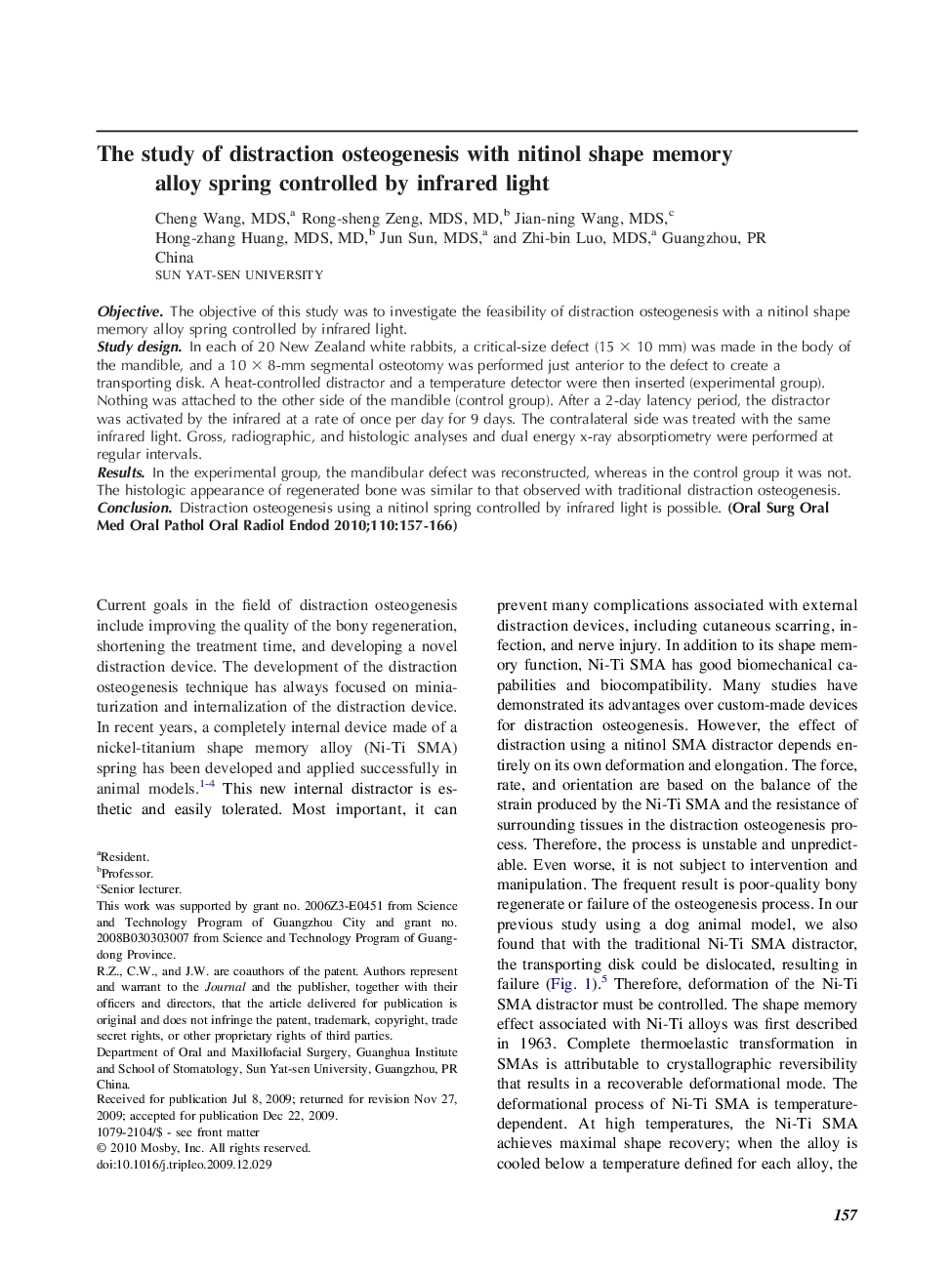| Article ID | Journal | Published Year | Pages | File Type |
|---|---|---|---|---|
| 3167490 | Oral Surgery, Oral Medicine, Oral Pathology, Oral Radiology, and Endodontology | 2010 | 10 Pages |
ObjectiveThe objective of this study was to investigate the feasibility of distraction osteogenesis with a nitinol shape memory alloy spring controlled by infrared light.Study designIn each of 20 New Zealand white rabbits, a critical-size defect (15 × 10 mm) was made in the body of the mandible, and a 10 × 8-mm segmental osteotomy was performed just anterior to the defect to create a transporting disk. A heat-controlled distractor and a temperature detector were then inserted (experimental group). Nothing was attached to the other side of the mandible (control group). After a 2-day latency period, the distractor was activated by the infrared at a rate of once per day for 9 days. The contralateral side was treated with the same infrared light. Gross, radiographic, and histologic analyses and dual energy x-ray absorptiometry were performed at regular intervals.ResultsIn the experimental group, the mandibular defect was reconstructed, whereas in the control group it was not. The histologic appearance of regenerated bone was similar to that observed with traditional distraction osteogenesis.ConclusionDistraction osteogenesis using a nitinol spring controlled by infrared light is possible.
